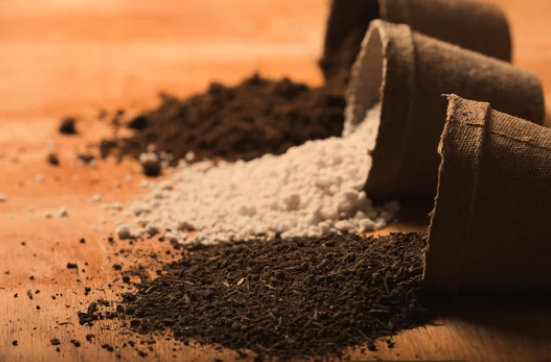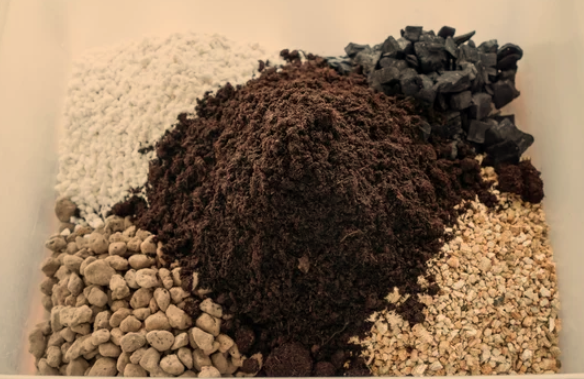If you’re planning on turning your green thumb to a rewarding indoor or outdoor greening project, planting a lemon tree can be a wonderful decision.
Before you jump in, however, it’s essential to gain a comprehensive understanding on a variety of elements starting from the type of lemon tree that’s best suited for your location, to the kind of care routine it will need once it’s potted.
From learning about how the size of the pot can affect the tree’s growth, right down to preparing the perfect soil mix for your new citrus friend this is your guide to successfully embark on this exciting horticultural journey.
Lemon Tree Varieties Exploring Different Varieties

Begin your journey into potting a lemon tree by exploring the various varieties available. The variety you choose can dictate the size of the pot needed, the care required for the tree, and even the quality of the lemons produced. It’s not a decision to be taken lightly.
Some common varieties include the Eureka, Lisbon, and Meyer lemon trees. Eureka and Lisbon lemons are what most people think of as classic lemons – tart and tangy, while Meyer lemons are often smaller and sweeter.
Researching Based on Geolocation
Next, you need to consider your geographical location while choosing a variety of lemon tree. For outdoor growth, if you live in a warmer climate like Florida or Arizona, Lisbon or Eureka could be suitable.
However, if you’re based in a slightly cooler region or want to keep your lemon tree indoors, the Meyer lemon tree is an excellent choice due to its ability to survive in lower temperatures, and its compact size makes it ideal as a potted plant.
Lemon Tree Growth Patterns and Size

potting lemon tree
Understand how much room you have to accommodate your future lemon tree. Keep in mind that outdoor lemon trees can grow to be fairly large, up to 20 feet tall and 12 feet wide in some cases.
On the other hand, indoor lemon trees, especially when pruned well, can remain within a manageable size around 3 to 5 feet tall. The pot you select for your tree is also contingent on these factors – a larger tree will necessitate a larger pot.
Knowing Sunlight Requirements
Regardless of the variety, all lemon trees crave sunlight. Research has shown that lemon trees do best with at least six hours of sunlight per day. If the tree is going to be indoors, be sure to place it near a south-facing window or another area where it will receive adequate light.
For outdoor trees, ensure the tree isn’t overshadowed by other trees or buildings. It’s important to note that while lemon trees need lots of light, they also can’t tolerate overly hot, direct sunlight – so shade in the afternoon might be required in warmer climates.
Finding the Right Balance
Last but not least, while choosing a lemon tree suitable for your conditions, find a balance. Size, growth patterns, sunlight requirements, and geographical location all play significant roles, so selecting a tree that aligns perfectly with all these aspects may be challenging. But with thorough research and understanding, you can make the right decision and enjoy the exciting journey of potting and nurturing your very own lemon tree.
Choosing the Right Pot Size for Your Lemon Tree

When potting a lemon tree, understanding the size requirements for a solid growth foundation is crucial. Start with a smaller, more manageable container when your lemon tree is still a sapling.
A pot approximately 12-15 inches in diameter should suffice. However, as the tree matures, be prepared to upgrade to a larger container. Adult lemon trees thrive in pots that are at least 20-25 inches in diameter. Remember, room for root growth equals more fruitful growth.
Different Pot Materials

Pots can be made from a variety of materials, each with its advantages and disadvantages. Clay or terracotta pots are traditional and attractive, but they dry out quickly and can be heavy to move.
Ceramic pots hold moisture well and come in many designs, but they can be pricier and equally heavy. Plastic pots are lightweight and retain moisture well, but they might not be as aesthetically pleasing. Wood can be an inspired choice, weathering beautifully and providing good moisture retention, but it can rot over time.
Consider your own capability to move the pot, your aesthetic preferences, the climate, and the place of the pot while making a choice.
Ensuring Proper Pot Drainage
One of the key elements of a healthy potted lemon tree is proper drainage. Excess water can lead to root rot, which is detrimental to your tree’s health. When choosing a pot for your lemon tree, make sure it has ample drainage holes at the bottom.
Preparing Your Pot for Optimum Drainage
The preparation of your pot plays a significant role in preventing water-logging issues. Firstly, you can layer small rocks or pebbles at the base of the pot prior to adding soil; this facilitates better water drainage.
Next, consider using a high-quality potting mix designed for citrus trees; these mixes usually have excellent draining properties. Lastly, don’t forget to place a tray or similar catchment device beneath the pot to collect drained water. Remember, a well-draining pot isn’t just about having drainage holes it’s also about what goes in the pot.
With these guidelines, you’ll be well on your way to nurturing a strong, healthy, and productive lemon tree.
Preparing the Soil Mix

Soil Requirements for Lemon Trees
Lemon trees have specific soil needs to flourish and bear ample fruit. First and foremost, the soil requires good drainage. Soggy roots are detrimental to lemon trees and can lead to root rot and other diseases. So, opt for a well-draining soil mix.
In addition to drainage, lemon trees prefer slightly acidic soil. This means the ideal pH should be around 6.0 to 7.0. By targeting this range, you allow your lemon tree to access necessary nutrients.
Creating the Perfect Soil Mix for Your Lemon Tree

The combination of garden soil, peat, and perlite can create an ideal environment for your tree.
Start by mixing equal parts of garden soil and peat. Garden soil provides necessary nutrients, while peat enriches the soil and aids in acidity, which lemon trees prefer.
To enhance drainage, the next step involves adding perlite into your soil and peat mix. Perlite, white to pale gray in color, is lightweight and resembles tiny pebbles. It also provides excellent drainage and prevents soil compaction, which can hinder root growth.
Add about a third of perlite to your mix of soil and peat. For example, for each shovel of soil and peat, use about a third of a shovel of perlite. The exact proportion isn’t critical, but the resulting mixture should feel fluffy and light, and when squeezed, it should fall apart.
Make sure to blend these ingredients thoroughly. The resulting mix should be loose and crumbly, not tightly packed. Remember that lemon trees require oxygen at their roots, so a light, airy soil mix is ideal. Test the pH of your soil mix to ensure it is in the ideal range for citrus trees, between 6.0 and 7.0.
Note on Adjusting Soil Acidity
If the soil is too alkaline (pH above 7), you can add more peat or compost to increase acidity. On the other hand, if the soil is overly acidic (pH below 6), adding finely ground agricultural limestone can help raise the pH.
This soil mix provides an excellent starting point for potting your lemon tree. Remember to monitor its growth and make necessary adjustments as the tree grows to ensure its ongoing health and fruit bearing abilities.
Potting the Lemon Tree
Before beginning the potting process, ensure that you have the right pot for your lemon tree. It should be just a bit larger than the preliminary plastic container your tree comes in. It’s beneficial to select a pot with plenty of drainage holes to prevent waterlog and root rot.
How to Plant Your Lemon Tree

potting lemon tree
Upon getting your pot, prepare it by covering the bottom with a layer of pebbles or small stones, which will aid in effective water drainage. After this, fill the pot with a citrus-specific, well-draining soil mix until it is around one third full. Now, you can add your lemon tree.
To plant, carefully remove your lemon tree from its initial container, making sure not to damage the roots in the process. Position your lemon tree in the center of your pot and start adding more soil to fill the pot. The soil level should be just at or slightly below the top of the root mass.
Note that it isn’t necessary to cover the very top, the bud union (the bulbous part of the trunk), with soil. Doing so can encourage rot diseases. Instead, plant the tree at an equivalent depth to how it was previously grown with the bud union above the soil line.
Watering the Lemon Tree for the First Time
Upon successful potting, water your lemon tree thoroughly. The water should run out of the bottom-holes of the pot. For the first few weeks, your tree should stay consistently moist but not drenched. Depending on the size of your tree, it may require up to a gallon of water each day. This allows the roots to properly establish themselves.
Positioning the Tree for Optimum Growth
Finally, consider where to place your newly potted lemon tree. Lemon trees thrive in sunlight and in conditions that mimic their natural Mediterranean and subtropical habitats. Position your potted tree in a sunny, warm, and wind-protected area.
If indoors, a south-facing window is best. Ensure it gets at least 10-12 hours of light a day. If necessary, supplement natural light with a grow light.
Balancing Temperature and Humidity Levels
Remember to maintain a balanced temperature for your lemon tree, ideally between 58ºF and 86ºF. Avoid sudden dips and changes in temperature. Humidity levels should also be kept high, so misting the leaves daily or placing the pot on a tray of wet pebbles can aid in achieving this.
Experience the joy of maintaining your potted lemon tree, and in time, you’ll be rewarded with fresh, vibrant lemons.
Lemon Tree Care

Proper Watering Techniques
Watering is an essential part of lemon tree care. It’s crucial to strike a balance when watering your potted lemon tree; enough to maintain healthy soil but not so much that the soil becomes supersaturated. Typically, you should water until you see it flowing out of the drainage holes at the bottom of the pot. To avoid waterlogged soil, let the top two inches dry out before the next watering, generally once a week. However, remember that the watering schedule may vary depending on the season and climate. For instance, during hotter periods or in dry, indoor environments, your lemon tree may need watering more frequently.
Fertilizer Needs
Fertilizing your lemon tree provides it with the nutrients it needs to produce juicy, vibrant lemons. You should apply citrus-specific fertilizer every month during the growing season (spring and summer) and every other month during the off-season (fall and winter). Follow the instructions on the fertilizer packaging on how much to apply based on the size and age of your tree. Too much fertilizer can harm your tree, making the leaves yellow and potentially killing it, so use it sparingly.
Dealing with Pests
Pests can quickly wreak havoc on a lemon tree. Common lemon tree pests include aphids, scale, and spider mites. If you notice unusual spots, discoloration, or curling on the leaves of your tree; these could be signs of a pest problem. Neem oil, a natural pesticide, can help control these pests.
Mix the oil with water as per the product’s instructions and spray it on the affected areas of the tree. Always test the solution on a small part of the plant before applying it fully, to ensure it doesn’t cause further damage.
Handling Diseases
Lemon trees can occasionally suffer from diseases like fungal or bacterial infections. Unusual markings on the leaves or cankers on the stem are often signs of disease. Removing the affected parts of the plant, improving air circulation, and applying a suitable fungicide or bactericide can often control these diseases. If the infection persists, it’s recommended to consult with a local agricultural extension or garden center.
Plant Positioning
Lastly, positioning is vital for a potted lemon tree. They crave lots of sunlight, at least six hours a day. Place the pot near a well-lit window or outdoors in a sunny spot. Remember, the container should be easy to move indoors during colder months to protect the tree from frost. Also, lemon trees prefer a slightly humid environment, so regular misting can help mimic this condition, especially during drier months.
All things considered, knowing how to correctly pot a lemon tree lays the foundation for a healthy, flourishing specimen that not only brightens up your space, but also provides the joy of home-grown citrus.




